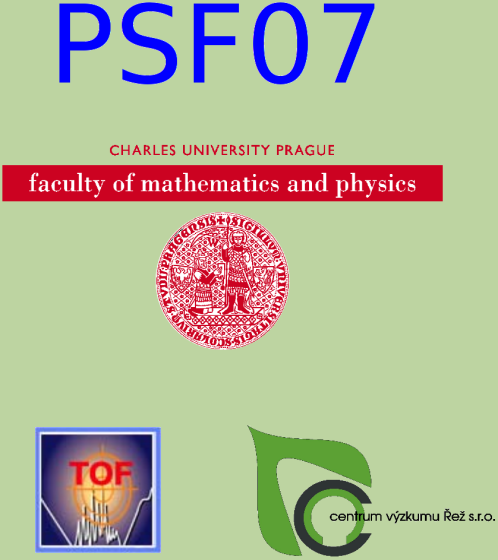

Gamma-ray emission following neutron capture in medium-weight and heavy nuclei has been a subject of continuing interest for more than five decades. Although copious experimental data have been accumulated and many attempts to describe this phenomenon in terms of related theoretical models have been undertaken, a number of important issues still remain unsolved or even untouched. Within the statistical approach the quantities of central importance for understanding the γ emission are photon strength functions (PSFs). There are two reasons why these entities deserve deeper studies:
First, in line with Brink’s hypothesis, the PSFs carry invaluable information about various vibrational modes coupled to the excited nuclear levels, including the levels in the quasicontinuum. Thus the shape and size of the tail of the giant electric dipole resonances built on excited levels can be subject to examination at energies below the neutron threshold. An example of the usefulness of studying the PSFs is the assessment that scissors-mode vibrations of deformed nuclei are not a property of only their ground states, as seen from nuclear resonance fluorescence (NRF) experiments, but all their excited levels. It implies that the interaction responsible for the scissors-mode vibrations is a fundamental attribute of deformed neutron and proton fluids. In general, the physics behind PSFs is closely or complementarily related to the widely-studied phenomenon of NRF.
Second, the knowledge of PSFs is a crucial prerequisite for rigorous processing of raw data yielded by the state-of-the-art, high-granularity γ-calorimetric systems that have been installed at the large-scale neutron time-of-flight facilities such as DANCE at Los Alamos and n_TOF at CERN. Detailed understanding of these complex detector systems is essential, because they are of primary importance for precise measurements of neutron capture cross sections for next-generation nuclear technologies, as well as for the present needs of the increasing nuclear astrophysics community.
Understanding these systems and understanding PSFs are interconnected. Indeed, the multi-parametric data accumulated from the γ calorimeters carry unique information on behavior of γ cascades accompanying the neutron capture. These systems make possible to learn more about PSFs, in particular in the region of low γ-ray energies below 4 MeV where the available data are very scarce. These new capabilities present significant future opportunities. Two promising techniques bring additional physical information in this general idea: the technique of two-step γ cascades following thermal neutron capture and the analysis of first-generation γ-ray spectra from 3He-induced γ emission.
The main mission of the Workshop is to bring together specialists from various fields of research related directly or indirectly to PSFs, to assess, exchange and share our most recent developments and formulate joint tasks aimed towards better understanding the physics of γ decay of nuclear levels below the neutron threshold.

| A - Theory I |
| Microscopic studies of multiphonon nuclear spectra PoS(PSF07)014 pdf |
| Level density parameters PoS(PSF07)005 pdf |
| Dipole photon strength functions from neutron induced reactions PoS(PSF07)013 pdf |
| B - Theory II |
| Verification of models for calculation of E1 radiative strength function PoS(PSF07)002 pdf |
| Hard gamma emission close to the GDR energy region PoS(PSF07)007 pdf |
| Giant resonances in fast rotating superdeformed nuclei PoS(PSF07)021 |
| C - Nuclear Resonance Fluorescence |
| Missing dipole excitation strength below the particle threshold PoS(PSF07)017 pdf |
| Nuclear dipole strength in the tail of the giant dipole resonance (GDR) PoS(PSF07)004 pdf |
| Dipole strength in N=50 nuclei studied in pohoton-scattering experiments at ELBE PoS(PSF07)020 pdf |
| Dipole-strength distributions below giant dipole resonance in the stable even-mass molybdenum isotopes PoS(PSF07)022 pdf |
| D - Two-Step Gamma Cascades |
| Photon strength functions of heavy nuclei: achievements and open problems PoS(PSF07)023 pdf attachments |
| Two-step gamma cascade method - tool for studying photon strength functions PoS(PSF07)011 |
| Is there an enhancement of photon strength at low gamma-ray energies in Mo isotopes? PoS(PSF07)024 pdf |
| E - Gamma Calorimetry at Isolated Neutron Resonances I |
| Investigation of the photon strength function of odd-odd Eu nuclei using the DANCE calorimeter PoS(PSF07)018 pdf |
| Neutron capture reactions on Mo and Gd isotopes using the DANCE array PoS(PSF07)001 pdf |
| Recent results using the DANCE detector at Los Alamos PoS(PSF07)015 pdf |
| F - Gamma Calorimetry at Isolated Neutron Resonances II |
| Photon strength function and neutron/proton capture PoS(PSF07)012 pdf |
| Study of the gamma spectra in the neutron capture reactions at n_TOF PoS(PSF07)019 pdf |
| Application of Photon Strength Functions to (n,g) measurements with the n_TOF TAC PoS(PSF07)006 pdf |
| G - 3He-Induced Gamma Emission |
| Photon strength functions and the Oslo method PoS(PSF07)003 pdf |
| Experimental gamma-ray strength functions in rare earth nuclei PoS(PSF07)025 |
| Gamma-ray strength functions in the f7/2 shell nuclei 44,45Sc and 50,51V PoS(PSF07)008 pdf |
| Gamma strength function in closed shell nuclei PoS(PSF07)010 pdf |